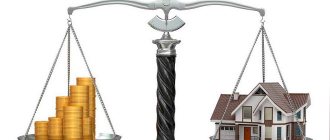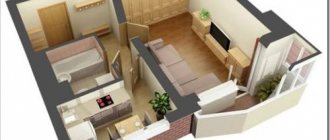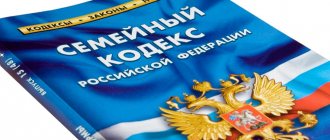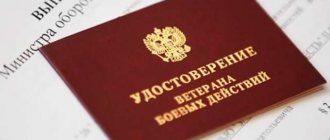At the beginning of April, experts recorded demand for apartments and houses. This is associated with the fall of the ruble and the projected increase in the key rate and mortgage interest rate. According to experts, the rush is temporary, while the cost of housing in Russian cities continues to rise.
Russians, in search of investment proposals, want to know how to calculate the cost per square meter. Below are current data on the dynamics of real estate prices in various cities of Russia.
Moscow subway
The largest and very first in Russia and the USSR. The Moscow metro opened on May 15, 1935 from the Sokolniki station. During the war it was used as a bomb shelter. Now the metro consists of 232 operating, one mothballed and 5 closed for reconstruction stations. The total length of all branches is 408.1 km. It ranks sixth in the world and first in Europe in terms of intensity of operation. The city leadership plans to build 27 more stations by 2023.
The Moscow metro is open from 5:30 to 1:00, the minimum interval between trains is 90 seconds, and the maximum is 5-6 minutes. There is Internet on trains and on metro platforms, but it does not work perfectly everywhere. Metal tokens are not sold in the Moscow metro; they went out of circulation in 1999. They were replaced by magnetic and then bank cards. The cost of one trip is 57 rubles.
Moscow metro map
World indicators
The year 2020 began with a sharp decline in real estate activity in the global market. The US achieved its worst sales figures in 10 years. In China and the UAE there was a collapse of 25%. The fall in prices is due to the spread of coronavirus around the world and the slowdown in economic processes. Real estate sales in European countries are frozen due to general quarantine.
The most expensive real estate remains in Hong Kong, where a square meter costs from 18 thousand dollars. The indicator is a developed economy, free markets and living standards in countries. The most expensive country in Europe remains Norway, where the cost per square meter starts from 4 thousand euros.
St. Petersburg metro
Opened on November 15, 1955. Unlike Moscow, it does not have ring stations. Consists of 5 branches and 72 stations. The St. Petersburg metro is the deepest in the world, if measured by the average depth of stations. The Admiralteyskaya station is located at a level of 86 meters underground and is closest to Palace Square, the Admiralty and St. Isaac's Cathedral.
The St. Petersburg metro opens at 5:38 and closes at 0:28 (the schedule is relevant for most stations, but not for all). On holidays and major sporting events, opening hours are sometimes extended. Payment is made using metal tokens, travel cards or bank cards. The cost of one journey is 55 rubles. When going up or down an escalator, it is customary to take the right side so that those in a hurry can run up on the left.
St. Petersburg metro map
Official standards for the cost of a square meter of housing 2021 (Data from the Ministry of Construction of Russia)
The standard cost of one square meter is 49,173 rubles (for the first half of 2021).
Indicators of average market value by region of Russia: (table)
Indicators of the average market value of one square meter of total residential area in the constituent entities of the Russian Federation for the 1st quarter of 2021 (in rubles)
| Position in the list | Region of Russia | Cost in rub. |
| Central Federal District | ||
| 1 | Belgorod region | 45 919 |
| 2 | Bryansk region | 31 572 |
| 3 | Vladimir region | 36 928 |
| 4 | Voronezh region | 40 251 |
| 5 | Ivanovo region | 34 851 |
| 6 | Kaluga region | 43 771 |
| 7 | Kostroma region | 34 800 |
| 8 | Kursk region | 37 014 |
| 9 | Lipetsk region | 39 107 |
| 10 | Moscow region | 65 752 |
| 11 | Oryol Region | 33 930 |
| 12 | Ryazan Oblast | 41 103 |
| 13 | Smolensk region | 32 893 |
| 14 | Tambov Region | 35 490 |
| 15 | Tver region | 41 640 |
| 16 | Tula region | 44 332 |
| 17 | Yaroslavl region | 42 389 |
| 18 | Moscow | 118 260 |
| Northwestern Federal District | ||
| 19 | Republic of Karelia | 44 208 |
| 20 | Komi Republic | 46 361 |
| 21 | Arhangelsk region | 53 314 |
| 22 | Vologda Region | 36 836 |
| 23 | Kaliningrad region | 45 014 |
| 24 | Leningrad region | 57 711 |
| 25 | Murmansk region | 60 425 |
| 26 | Novgorod region | 36 996 |
| 27 | Pskov region | 37 522 |
| 28 | Nenets Autonomous Okrug | 65 565 |
| 29 | Saint Petersburg | 85 539 |
| Southern Federal District | ||
| 30 | Republic of Adygea | 38 298 |
| 31 | Republic of Kalmykia | 32 811 |
| 32 | Republic of Crimea | 53 793 |
| 33 | Krasnodar region | 46 811 |
| 34 | Astrakhan region | 38 685 |
| 35 | Volgograd region | 39 399 |
| 36 | Rostov region | 45 133 |
| 37 | Sevastopol | 67 504 |
| North Caucasus Federal District | ||
| 38 | The Republic of Dagestan | 31 774 |
| 39 | The Republic of Ingushetia | 32 481 |
| 40 | Kabardino-Balkarian Republic | 31 968 |
| 41 | Karachay-Cherkess Republic | 38 368 |
| 42 | Republic of North Ossetia-Alania | 35 695 |
| 43 | Chechen Republic | 39 289 |
| 44 | Stavropol region | 32 744 |
| Volga Federal District | ||
| 45 | Republic of Bashkortostan | 47 027 |
| 46 | Mari El Republic | 34 962 |
| 47 | The Republic of Mordovia | 39 499 |
| 48 | Republic of Tatarstan | 53 919 |
| 49 | Udmurt republic | 43 866 |
| 50 | Chuvash Republic - Chuvashia | 39 061 |
| 51 | Perm region | 43 398 |
| 52 | Kirov region | 36 431 |
| 53 | Nizhny Novgorod Region | 51 817 |
| 54 | Orenburg region | 34 410 |
| 55 | Penza region | 37 770 |
| 56 | Samara Region | 37 674 |
| 57 | Saratov region | 34 521 |
| 58 | Ulyanovsk region | 38 633 |
| Ural federal district | ||
| 59 | Kurgan region | 34 174 |
| 60 | Sverdlovsk region | 53 610 |
| 61 | Tyumen region | 48 221 |
| 62 | Chelyabinsk region | 33 070 |
| 63 | Khanty-Mansiysk Autonomous Okrug - Ugra | 51 501 |
| 64 | Yamalo-Nenets Autonomous Okrug | 65 893 |
| Siberian Federal District | ||
| 65 | Altai Republic | 43485 |
| 66 | Tyva Republic | 47 731 |
| 67 | The Republic of Khakassia | 38 715 |
| 68 | Altai region | 40 171 |
| 69 | Krasnoyarsk region | 46 851 |
| 70 | Irkutsk region | 48 565 |
| 71 | Kemerovo region - Kuzbass | 40 631 |
| 72 | Novosibirsk region | 49 593 |
| 73 | Omsk region | 38 961 |
| 74 | Tomsk region | 46 532 |
| Far Eastern Federal District | ||
| 75 | The Republic of Sakha (Yakutia) | 87 444 |
| 76 | Kamchatka Krai | 81 965 |
| 77 | Primorsky Krai | 91 076 |
| 78 | Khabarovsk region | 86 801 |
| 79 | Amur region | 78 143 |
| 80 | Magadan Region | 81 965 |
| 81 | Sakhalin region | 87 063 |
| 82 | Jewish Autonomous Region | 81 965 |
| 83 | Chukotka Autonomous Okrug | 81 965 |
| 84 | The Republic of Buryatia | 61262 |
| 85 | Transbaikal region | 81 965 |
Cost in previous periods
The official standard for the cost of one square meter (total area of residential premises) is established by the Ministry of Construction and Housing and Communal Services of Russia. For the first half of 2021, its value was 49,137 rubles. This indicator is a methodology for calculating the average market value of 1 sq.m. living space. The norm itself is calculated every six months, and the average market value by region is recalculated once a quarter. The average market value indicator is used to calculate the amount of gratuitous subsidies for the purchase or construction of residential premises by citizens at the expense of the federal budget. That is, to calculate the amount of social payments to certain categories of citizens for the purchase of housing on preferential terms. These categories include young families, veterans, disabled people, military personnel, young scientists, etc. That is, those citizens whom the state undertakes to provide with housing under preferential financing programs. In different regions of the country, different programs may operate, partially differing in conditions, and the circle of people falling into preferential categories may differ. When purchasing an apartment by individuals who do not apply for government subsidies, these price values play virtually no role. However, they are very important for those who have the right to count on government assistance in purchasing housing. And also for those who participate in other state housing programs, for example, rent out their apartment to the state and receive compensation for this (like citizens leaving the Far North and equivalent areas). It is on the basis of these standards that payments and compensation due are calculated. In addition, these values are accepted as the starting price in tenders for the purchase of housing built at the expense of the state budget. Construction and real estate companies participating in the tender cannot purchase housing at a lower price, but this also limits the upper price limit for final home buyers. Which generally limits and restrains the rise in prices per square meter of living space. At the same time, the “average market price according to the Ministry of Construction” is only relatively related to the real market value of residential space in large cities and regions, which in practice significantly exceeds the established official standard. Thus, in Moscow, the average real market price for the same dates was about 200 thousand rubles. for 1 sq. meter. Which is more than twice the official norm. In the regions, especially in the outback, there are even more difficulties in determining prices and receiving compensation, since there the amount of subsidies can be calculated not only taking into account the indicator for the region, but also with data specific to its individual regions. It follows from this that in some localities and settlements the established average market prices may differ from those shown in the table. They can be found out by contacting authorized government organizations or banks participating in the financing of social housing programs.
Nizhny Novgorod metro
It was built third, after Moscow and St. Petersburg. It opened on November 20, 1985 and consists of only two branches, on which 15 stations are located. The Nizhny Novgorod metro operates from 5:30 to 00:00 with train intervals from 5 to 14 minutes (at later times). The fare is 28 rubles.
It is interesting that until 2010, Nizhny Novgorod metro tokens were actively used by St. Petersburg residents: the weight, diameter and alloy were identical and the St. Petersburg turnstile accepted them. However, at some point the difference in travel prices in Nizhny and St. Petersburg became colossal and the authorities decided to regulate the situation. As a result, a hole appeared in the tokens of the Nizhny Novgorod metro, which the turnstiles of the St. Petersburg metro do not perceive.
Nizhny Novgorod metro map
Dynamics of indicators by year
Today the most densely populated regions of Russia are:
- Moscow and Moscow region;
- Saint Petersburg;
- Kaliningrad;
- Sevastopol and Crimea;
- Ingushetia;
- Chechnya;
- Other Caucasian republics;
- Krasnodar;
- Samara;
- Tatarstan;
- Tula;
- Belgorod region;
- Lipetsk region.
- Vladimir region;
- Ivanovo region;
- Other areas of the central black earth region of Russia.
It is almost 50 times less than in Moscow; it is observed in the Primorsky Territory, Kurgan, Pskov, Novgorod, Kostroma, Kirov, Tyumen regions, Khanty-Mansi Autonomous Okrug, and Yamalo-Nenets Autonomous Okrug.
In Murmansk, Jewish Autonomous Okrug, Kalmykia, Karelia, Khanty-Mansiysk, Buryatia, Irkutsk, Arkhangelsk, Transbaikalia, Altai, Amur Region, the figure is already more than 1000 times less than in Moscow.
The situation is even worse in Kamchatka, Sokha, Magadan, Nenets and Chukotka Autonomous Okrug. Here the population is 12,000 times smaller than in Moscow and is only approximately 0.67 people per km².
Novosibirsk metro
The Novosibirsk metro was launched immediately after the Nizhny Novgorod metro - on January 7, 1986. Currently it has 2 lines and 13 stations. The travel time from the first to the last station of the line is 10-15 minutes. The token costs 25 rubles. But if you buy a single transport card, it will be cheaper. Opening hours: from 6:00 to 23:00.
The main attraction of the Novosibirsk metro is the longest metro bridge in the world. It is thrown across the Ob River and its length is 2145 meters. Connects the stations "Studencheskaya" and "Rechnoy Vokzal".
Scheme of the Novosibirsk metro
TOP 10 deepest rivers in Russia
#10 Ishim
| Length: | 2450 km. |
| Maximum depth: | 8 m. |
| Water consumption: | 83.1 m³/s |
| Pool: | 177,000 km². |
A river flowing in the Tyumen and Omsk regions. The longest tributary of the Irtysh, the length is 2450 km. Geographically located in Russia and Kazakhstan. The average depth is about 5-8 meters.
215 km of the reservoir are suitable for navigation. Also on Ishim there is the Vyacheslavskoe reservoir, which is necessary for Astana, Petropavlovsk, and Ishim.
Read more
#9 Lower Tunguska
| Length: | 2989 km. |
| Depth: | 6-10 |
| Pool: | 473,000 km². |
| Water consumption: | 3680 m³/s. |
The second largest tributary of the Yenisei flows along Eastern Siberia, in the Irkutsk region and Krasnoyarsk Territory. The length of the river reaches 2989 km. The average depth is at 6-10 m.
Read more
#8 Vilyui
| Length: | 2650 km. |
| Maximum depth: | 12 m. |
| Pool: | 454,000 km² |
| Water consumption: | 1480 m³/s (122 km from the mouth) |
The largest left tributary of the Lena is located mainly in Yakutia. The source of the reservoir is on the Central Siberian Plateau. The length is 2650 km. The reservoir is part of the Vilyui Reservoir. Maximum depth – 12 m.
Read more
#7 Volga
| Length: | 3530 km. |
| Maximum depth: | 17 m. |
| Pool: | 1,360,000 km². |
| Water consumption: | 8060 m³/s. |
The Volga is the greatest Russian river, many cities are located on it. It originates on the Valdai Hills, flows into the Caspian Sea, forming a wide delta.
The south is characterized by a variety of fish species, and there is also a deposit of Scythian gold. The length of the river is 3530 km, and the average depth is 11-17 m, but in some areas the mark is at 18 m.
Read more
#6 Irtysh
| Length: | 4248 km. |
| Maximum depth: | 20 m. |
| Pool: | 1,643,000 km². |
| Water consumption: | 3000 m³/s. |
One of the tributaries of the Ob is special in that it flows simultaneously through the lands of three states: Russia, China, and Kazakhstan. The influx ranks second largest, first in Missouri (USA). In the Russian Federation, the route passes through the Omsk and Tyumen regions, Khanty-Mansiysk district.
The maximum depth mark is 15 m. Despite human activity, the river has preserved extensive flora and fauna. People relax and fish on the Irtysh.
Read more
#5 Lena
| Length: | 4400 km. |
| Maximum depth: | 20 m. |
| Pool: | 2,490,000 km². |
| Water consumption: | 16,350 m³/s. |
In central Siberia, its length reaches 4,400 km (with delta), and this is the maximum in the area, and its depth exceeds 20 m. The river is a tributary of the Laptev Sea, which is part of the Arctic Ocean. Flows through Yakutia, Irkutsk region. The most famous landmark of this area is the Lena Pillars - a complex of elongated rocks along the Lena coastline.
The reservoir is located in the area of Lake Baikal, near Irkutsk it makes a loop in a northerly direction. Fish are abundant in the Lena, as in other northern large river reservoirs.
Read more
#4 Kama
| Length: | 1805 km. |
| Maximum depth: | 30 m. |
| Pool: | 507,000 km². |
| Water consumption: | 4100 m³/s. |
The Kama is the largest tributary of the Volga and has a length of 1805 km. But, paradoxically, the maximum depth of the Volga is only 20 m, while at the Kama this figure is at around 30 m. At the source, the reservoir is shallow, with opaque water. However, as you approach the Volga, it becomes deeper, wider and fuller.
The main function of the river is navigable, like most deep ones. Thanks to the vastness of the Kama, it allows you to reach the most remote settlements. Also in the past, the reservoir was used to transport logs, but this practice has now been stopped and the bottom has been cleared of them.
Read more
#3 Ob
| Length: | 3650 km. |
| Maximum depth: | 40 m. |
| Pool: | 2,990,000 km². |
| Water consumption: | 12,492 m³/s. |
The river is considered one of the largest in Siberia, and is also included in the list of the largest in the world. The length of the reservoir excluding the Irtysh is 3650 km, and with it 5410 km. It takes its source at the confluence of the Katun and Biya. Among Siberian river reservoirs it is considered the absolute leader. A tributary of the Kara Sea, at its confluence it forms the Gulf of Ob.
The depth reaches 40 meters. It flows along the West Siberian Plain, past the taiga and tundra. There are a lot of twists and turns along the way. The Ob is famous for its rich flora and fauna.
Read more
#2 Cupid
| Length: | 2824 km. |
| Maximum depth: | 56 m. |
| Pool: | 1,855,000 km². |
| Water consumption: | 12,800 m³/s. |
The river flows mainly in the Far East and divides the territories of China and the Russian Federation (for 3000 km). The length of the Amur reaches 2824 km, and as part of the Argun-Khailar-Amur channel system it is 4440 km. The area near the river is one of the largest fishing areas in Russia. The maximum depth is 56 m, near the Tyrsky cliff.
Read more
#1 Yenisei
| Length: | 3487 km. |
| Maximum depth: | 66 m. |
| Pool: | 2,580,000 km². |
| Water consumption: | 19,800 m³/s. |
The reservoir is on the list of the largest rivers in the world. From the source of the Big Yenisei, water travels a path 4,100 km long, and from the Small Yenisei even more, 4,200 km. The river originates in Kyzyl (Republic of Tyva) and draws the border between Western and Eastern Siberia.
According to official data, the maximum depth of the Yenisei is 66 meters and is reached not far from the Osinov rapids. But based on statements from fishermen and the fleet, depths of about 100 meters can be observed in some areas. However, this information has not been confirmed in any way by research, due to insufficient knowledge of the Yenisei. Therefore, it may happen that the river is one of the deepest in the world.
There is reason to believe that the Yenisei has a tectonic origin, because such reservoirs have the greatest depth.
Read more
Samara metro
The Samara metro is one line 12.6 km long. It consists of 10 stations and bears the name of the Soviet statesman Alexei Andreevich Rosovsky, who actively built Samara in the 60-80s. Moreover, the metro was opened in 1987, and the name was given in 2013.
A token costs 32 rubles, but a trip using the Unified Transport Card will cost 29 rubles. The metro starts operating at 6:00 and ends at 24:00. The interval between trains is 10-12 minutes. Passenger traffic is low, which you would probably consider a good thing if you were on the Moscow metro during rush hour.
Samara metro map
Yekaterinburg metro
The Yekaterinburg metro opened in 1991 and was called Sverdlovskoe for exactly a year of its life. Currently it includes one line with 9 stations, but in the uncertain future it is planned to build 3 more lines
The metro operates from 6:00 to 24:00. The cost of one trip is 32 rubles. Interesting fact: when the Moscow metro stopped using tokens, some of them were given to Yekaterinburg and for a long time residents of the Urals came across roundels with the wrong “brand”.
Yekaterinburg metro map
Kazan metro
This metro is the youngest - in 2021 it turned only 15 years old. The Kazan metro was opened in 2005, timed to coincide with the 1000th anniversary of the city. Interestingly, this is the first metro built on the territory of the former USSR. So far, the Kazan metro is the only line with 11 stations, 17 km long. But in the spring of this year they have already taken up the construction of line 2.
The fare in the capital of Tatarstan is 30 rubles (27 on the Unified Transport Card). Standard operating hours: from 6:00 to 24:00.
Kazan metro map
Cities in Russia where there is an unfinished metro
We figured out which Russian cities have metro. Now let's talk about the future. The metro is a very expensive proposition; its construction costs billions of rubles (and sometimes dollars). Therefore, it is not surprising that the process of its construction in some cities lasts for decades, and sometimes even stops halfway.
- Thus, the idea to build a metro in Ufa was approved in 1996, but then the decision was canceled and, as an alternative, the Tolpar electric train was launched in the city.
- A similar story happened in Rostov : the metro there was supposed to open in 2021, but in 2015 the design was canceled. However, recently they started talking about it again, and it was even estimated that construction would cost 76 billion rubles.
- In Perm , work on the metro project began back in 1982, but it never came to anything. However, city residents still remember that they were promised a metro, they believe and wait.
- Omsk metro began in 1992, but in 22 years one and a half stations were built and the facility was mothballed.
"Wood" and "small family"
In Rostov-on-Don, the average cost of a 1-room apartment is 2.2 million rubles, and the most inexpensive one-room apartment in houses built in 1960–1978 can be bought for 1.8 million. A private house can be purchased for 2.2–4.5 million, and a summer cottage for 300 thousand rubles. The average salary in Rostov is 25 thousand rubles.
New buildings and old houses. Rostov-on-Don. Photo: www.russianlook.com
The cost of Khanty-Mansiysk apartments starts from 1.5 million rubles. For this money you can buy an apartment of 20 square meters. m in a “piece of wood”. A 1-room apartment in a new building costs from 3 million, and a dacha 15 kilometers from the city will cost from 500 thousand rubles. Cottages 3 km from the city are sold for 3 million rubles. The average salary in Khanty-Mansi Autonomous Okrug for 2013 was about 55 thousand rubles.
Article on the topic
Summer real estate prices. How much does an apartment in Moscow cost now?
In Orenburg, you can buy a room for 800 thousand rubles, and for 1.7 million - a 1-room apartment of 33 square meters. m. “Odnushka” of a new layout in a house under construction will cost 1.8–2.3 million. A dacha outside the city will cost from 100 to 500 thousand rubles, depending on the house and the ability to register. Price of a country cottage: from 2.5 million. Average salary in Orenburg is 22 thousand rubles.
In Smolensk, the cheapest housing costs 950 thousand rubles. For this money you can buy a room in a family-type hostel. Small-family houses (individual small-sized “one-room apartments”) cost from 1.2 million. “One-room apartment” in a house with an improved layout (a house about 10 years old) costs 1.7–2 million rubles. The cheapest dacha near Smolensk is sold for 550 thousand rubles. The cheapest cottage is 2.5–2.9 million rubles. The average salary in Smolensk is 22 thousand rubles.
In Vologda, the cheapest 1-room apartment costs 1.2 million. For this money you can buy housing in a two-story house on one of the farthest outskirts. On average, one-room apartments in Vologda cost from 1.5 to 3 million rubles, and the most expensive apartment is sold for 4.1 million. For 200 thousand rubles you can buy a country house, but most likely it will be a rather old building. The cost of luxury suburban housing starts from 5.9 million rubles. For this money you can buy a brick cottage with an area of 450 square meters. m, with a bathhouse, running water, central heating and gas. The average salary in the city, according to Vologdastat, is 28.6 thousand rubles.
Victory Avenue. Vologda. Photo: www.russianlook.com
Article on the topic
Prices for Crimean apartments. Housing on the Russian peninsula has risen in price by 20%. A room in Chelyabinsk with an area of 15 sq. m. m costs from 480 thousand rubles, and a one-room apartment in a remote industrial area - from 1.3 million rubles. Country house with an area of 12 sq. m and with a plot of 4 acres can be bought for 100 thousand rubles, and a cottage of 76 sq. m. m - for 2.6 million. The average salary in Chelyabinsk is 23 thousand rubles.
In which cities of Russia will a metro be built?
But the Krasnoyarsk metro looks more promising. It has been built there intermittently since 1995. In 2011, all work was suspended and the metro was mothballed until 2021. Now construction has continued and, according to officials, the first metro line will begin operating in 2024.
The second city that can hope to see a metro in the near future is Chelyabinsk . The Chelyabinsk metro has been being built very slowly for 28 years, but they promise to finish it by 2025. However, this is too rosy a date - given the amount that the city still has to spend, the launch will most likely have to be postponed until 2033 - 243. The network has already compared the cost of the Chelyabinsk metro with the cost of two Vostochny cosmodromes, but they continue to hope.
Subscribe to Migranta Rus: Yandex News.
Population of Russia in 2021
In 2021, the population of Russia will increase by 60,069 people and at the end of the year it will amount to 146,570,133 people. Natural population growth will be negative and amount to 168,487 people. Over the entire year, approximately 1,862,143 children will be born and 2,030,629 people will die. If the level of external migration remains at the level of last year, then due to migration reasons the population will change by 228,556 people. That is, the total number of people entering the country for the purpose of long-term stay (immigrants) will be greater than the number of people leaving the country (emigrants).










